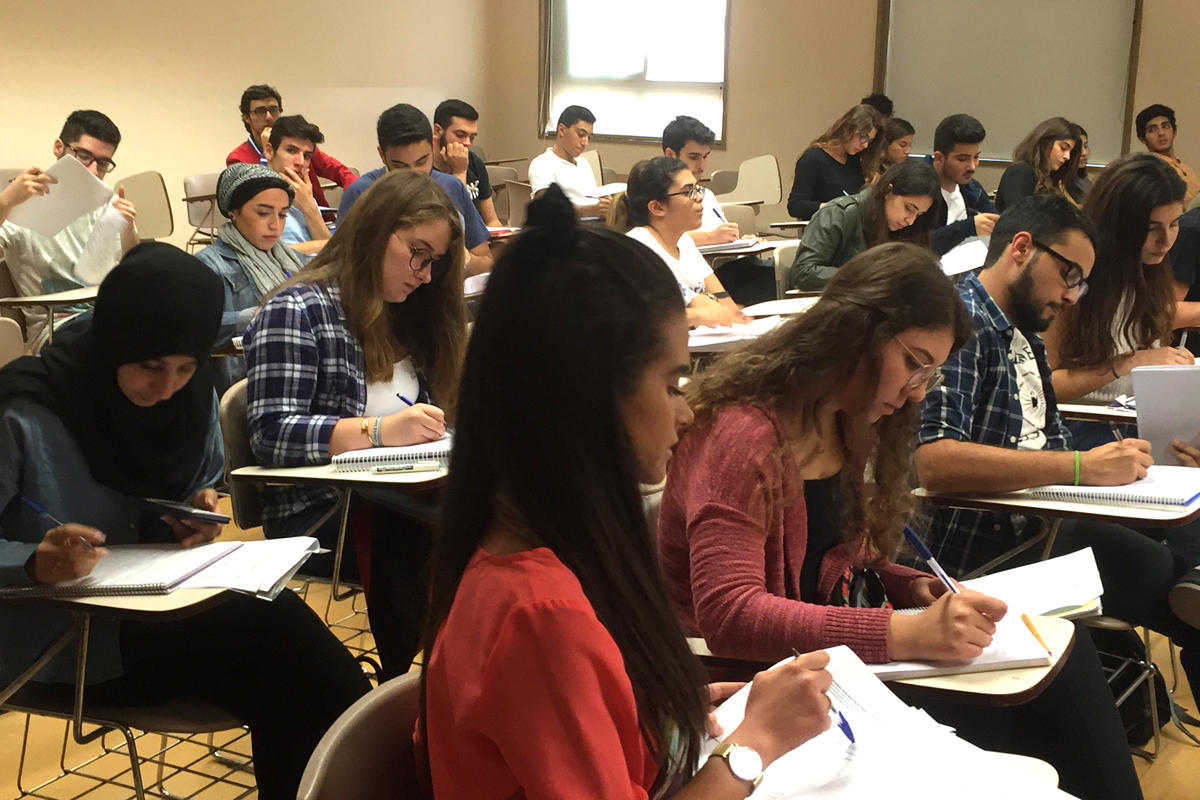Harvard Learning Method Makes its Debut at AKSOB
Professors use the Harvard case study method to create an engaging classroom atmosphere.
LAU always aims to cultivate a vibrant learning environment by introducing innovative teaching methods that promote student engagement. In addition, the university regularly partners with other esteemed institutions to maximize the potential of its courses and students.
In light of this, Adnan Kassar School of Business (AKSOB) Assistant Professor of Marketing Zahy Ramadan and Assistant Professor of Information Technology Management Manal Yunis implemented the Harvard Business School case study method in several graduate courses this semester.
The Harvard case method is a teaching approach that helps students develop skills by analyzing real-life business problems in the classroom. The method places the student in the role of the decision maker, and as the case study begins to unfold in class, the students and professor co-create the learning process. The professor becomes the moderator of the discussion, and students undergo a dynamic process of exchanging ideas, suggesting solutions, and probing underlying issues. “We don’t only seek results after a case study – we seek the wealth of discussion,” said Dr. Ramadan. He emphasized the importance of “having students engage in the learning process during thought-provoking class discussions.”
“Student engagement using this innovative instruction-delivery method is crucial to an effective learning process and is a key element in AACSB-accredited schools’ missions,” said Dr. Yunis, referring to the Association to Advance Collegiate Schools of Business, with which AKSOB is accredited. “The Harvard case study method drives student engagement to high levels,” she added.
Hospitality Management and Marketing Department Chair Maya Farah agrees on the importance of active learning in curricula. “The case method helps students appreciate how course material can be applied to the real business world, explore problems from various perspectives, and practice critical thinking and analysis,” she said.
Chair of the Information Technology and Operations Management Department Raed El Khalil noted that “under this teaching-learning model, both the teacher and the students become partners, as they work collectively to achieve a common objective, thus advancing knowledge and innovation.”
Drs. Ramadan and Yunis learned the method firsthand when they attended Harvard’s Global Colloquium on Participant-Centered Learning in Boston.
The workshop was designed to help educators learn techniques they can use in the classroom when implementing the method, including, for example, how to fuel a debate between two students and how to draw a line on a certain angle of a discussion.
“We faculty members sat in classrooms and enjoyed the learning experience from the perspective of the students,” said Dr. Ramadan. “Throughout the workshop, we would also take the time to reflect back on the teaching method that was used on us by the facilitator of the discussion.”
“The way the class was conducted gave us participants the feeling that we were living a real-life experience,” added Dr. Yunis. “We assumed the role of decision makers – and sometimes consultants – with the understanding that our decisions could be detrimental. “It was an amazing learning experience that our MBA students should also have.”
Back in Lebanon, the method has so far proven successful. “The case study method certainly helped me learn how to think outside the box,” said current MBA student Ahmad Al Sabbagh. “By analyzing a case, we were able apply what we learned throughout the course, share our opinions, and engage in discussions. It’s about learning how to nurture our skills and knowledge through class participation and peer interaction.”
While Dr. Ramadan has introduced the method into his EMBA Marketing Communications and MBA Strategic Marketing classes, “I’m also keen on expanding this method to other marketing MBA courses by next semester, and hopefully to other MBA courses in the near future,” he said.
Dr. Yunis is also incorporating the method into her courses. “I applied it in one EMBA course this semester, and I’m intending to use it in many MBA and EMBA classes I will be giving in the coming semesters,” she said.
LAU is one of the first universities in the Middle East to incorporate this teaching method as part of the curriculum. Indeed, placing LAU at the forefront of pedagogical innovations is part of the Third Strategic Plan.
The method also aligns with LAU and AKSOB’s “goal to convert students’ diverse backgrounds and abilities into real opportunities for enhancing their functional, conceptual and communication skills, as well as fostering life-long learning among students and teachers,” said Dr. Yunis.
“When students are placed in the role of decision makers, they learn the skills to be excellent corporate leaders and top executives in the future,” added Dr. Farah.
Current MBA student Tala Nassar said that she learned a lot from the method as it allowed her to see things from different perspectives. “This sort of engagement makes us more passionate about attending the class because it’s not only enjoyable as an experience, but it’s educative beyond textbooks.”
